It& #39;s hard to imagine how groups like @EmberClimate don& #39;t understand the difficulties of balancing intermittent generation with variable demand. I guess they think the job of geniuses like them is to deal with the big picture, and details like balancing will work themselves out... https://twitter.com/bgprior/status/1386105046404849665">https://twitter.com/bgprior/s...
As this feat of imagination seems to be beyond the capabilities of the green lobby, in or out of Westminster & Whitehall, I thought I& #39;d try drawing some pictures that even an idiot should be able to understand.
Imagine we live in Ember& #39;s 2050 world and the weather is like 2017:
Imagine we live in Ember& #39;s 2050 world and the weather is like 2017:
This is how demand for electricity (or H2, treating H2 as effectively an electricity storage/transmission technology) in a fully electrified energy system would compare in January with the output of inflexible generation technologies at Ember& #39;s proposed capacities.
It doesn& #39;t matter how many wind turbines and solar panels you& #39;ve got, if the wind isn& #39;t blowing or the sun isn& #39;t shining, you& #39;ve got nothing. In 2017, that was the case for most of 16-25 Jan. Meanwhile, demand is high then, especially when you add electrified heat and transport.
When you net that off, this is what you get. This is not a profile that is amenable to storage, whose economics rely on frequent cycles (e.g. charge/discharge once or twice a day). But some combination of storage, interconnectors & dispatchable capacity has to fill the gap.
If we add storage, interconnectors and dispatchables (in that priority order) into the mix, this is how it looks. That white space between the demand line and the supply bands (by tech) is demand that cannot be supplied. At worst (23/1 07:00), that& #39;s 80 GW missing.
Worse, the market is persistently short from 16 to 25 Jan. In neither amplitude nor duration is that a "blip" that you can deal with by asking people to cut back their usage for an hour or two.
Notice, storage runs out on 19 Jan.
Notice, storage runs out on 19 Jan.
We go into this period fully charged because it is preceded by a sustained windy period. Yet once we& #39;re in deficit, we run out within 4 days.
This obviously depends on the storage capacity. It was beneath Ember& #39;s pay grade to be specific. They proposed 18 GW of batteries, but...
This obviously depends on the storage capacity. It was beneath Ember& #39;s pay grade to be specific. They proposed 18 GW of batteries, but...
...nothing on the GWh (betraying either ignorance of basic storage specs or their disingenuity). Batteries are purple for charge level, red for flows (+ = discharge) in the chart.
They said nothing about the capacity of H2 (blue for charge level, brown for flows in the chart).
They said nothing about the capacity of H2 (blue for charge level, brown for flows in the chart).
I was q generous in the storage capacity, not in terms of what might technically be doable, but its utilisation level, which equates roughly to its cost.
Batteries tend to be short-cycle, so I allowed 100 GWh for the 18GW. For H2, I took 20 GW / 2000 GWh for longer cycles.
Batteries tend to be short-cycle, so I allowed 100 GWh for the 18GW. For H2, I took 20 GW / 2000 GWh for longer cycles.
Treating this storage as a series of 100 GWh tranches, the marginal utilisation looks like this. (The charge/discharge gap is because the round-trip efficiency of H2 is poor.) After the first few 100 GWh, the utilisation is so low that the costs per GWh would be horrendous.
This final chart shows how demand compares with the supply margin (positive [i.e. more capacity than required] in green, negative [i.e. insufficient capacity for demand] in red). The baseline is 80 GW short. We are short (of energy for heat, transport, etc) for c.2/3 of January.

 Read on Twitter
Read on Twitter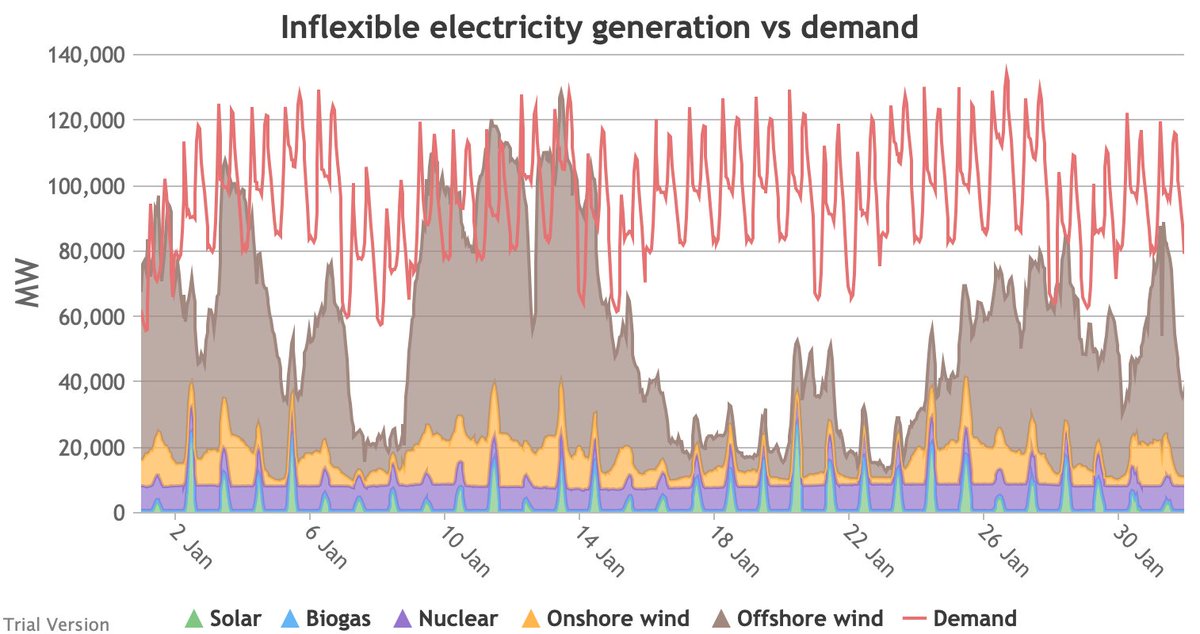
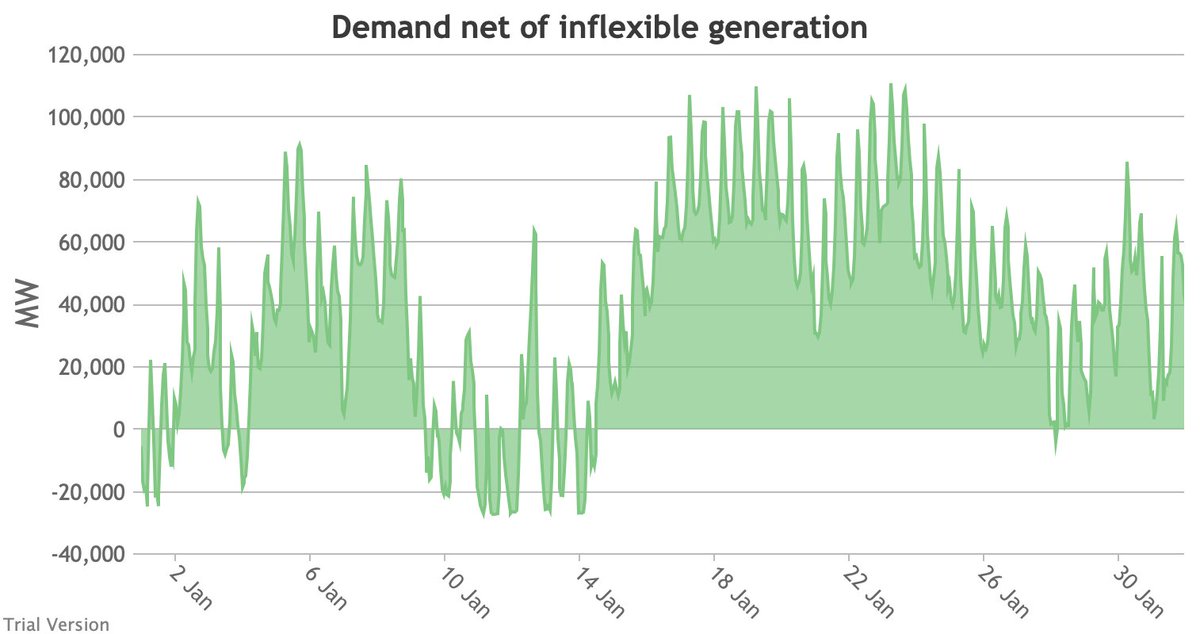
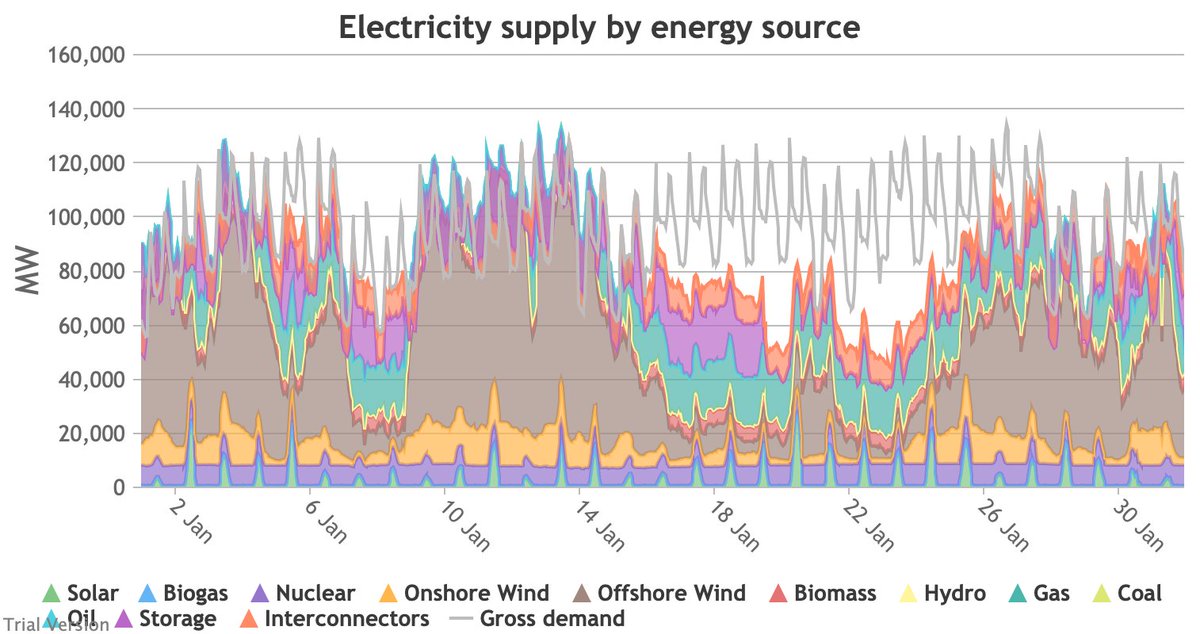
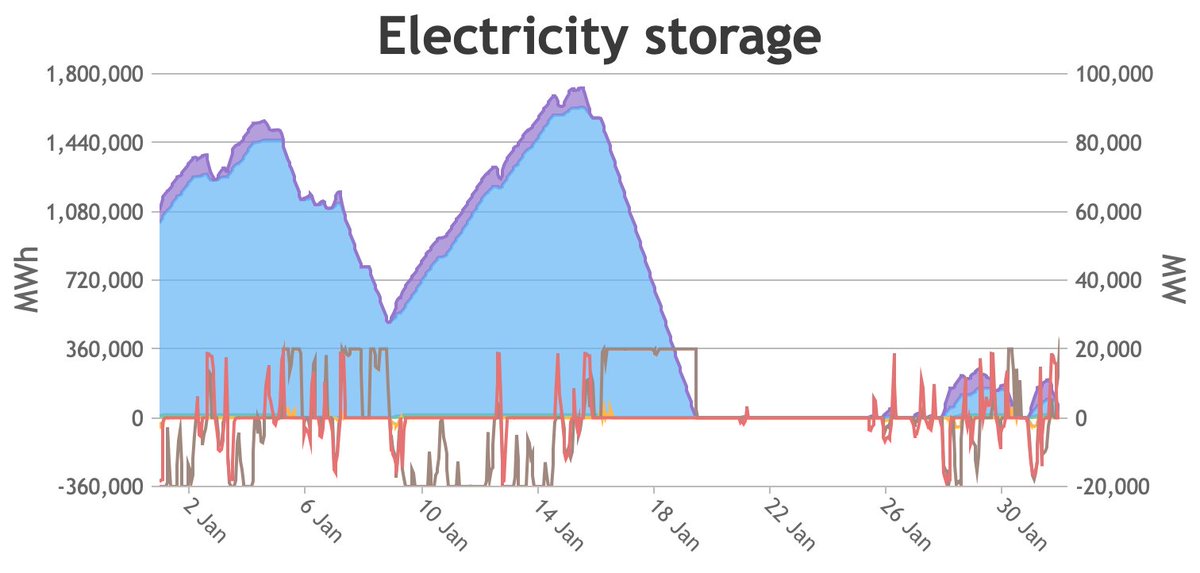
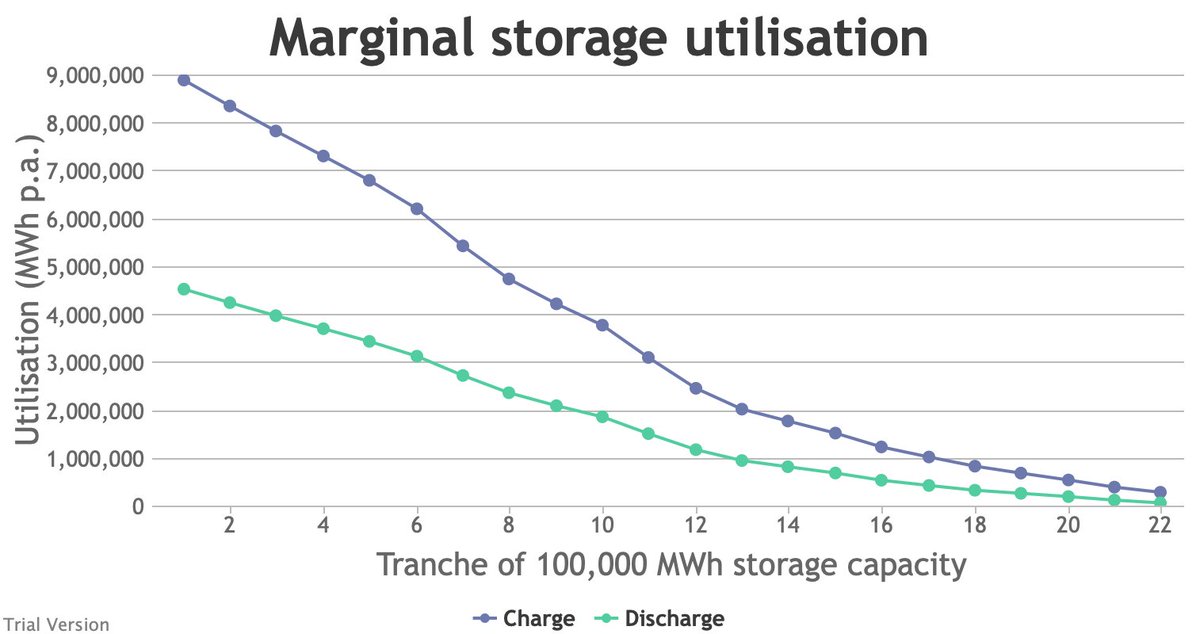
![This final chart shows how demand compares with the supply margin (positive [i.e. more capacity than required] in green, negative [i.e. insufficient capacity for demand] in red). The baseline is 80 GW short. We are short (of energy for heat, transport, etc) for c.2/3 of January. This final chart shows how demand compares with the supply margin (positive [i.e. more capacity than required] in green, negative [i.e. insufficient capacity for demand] in red). The baseline is 80 GW short. We are short (of energy for heat, transport, etc) for c.2/3 of January.](https://pbs.twimg.com/media/Ez26Lg3VIAAmr1b.jpg)


